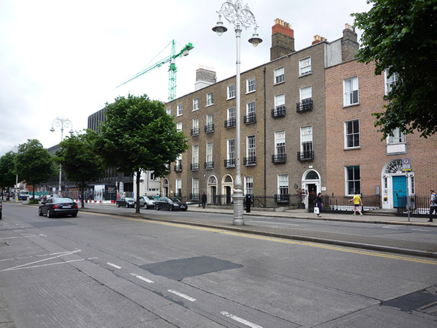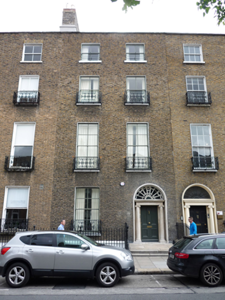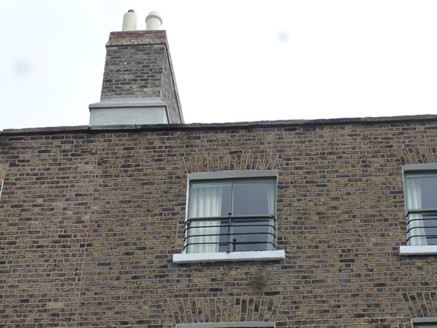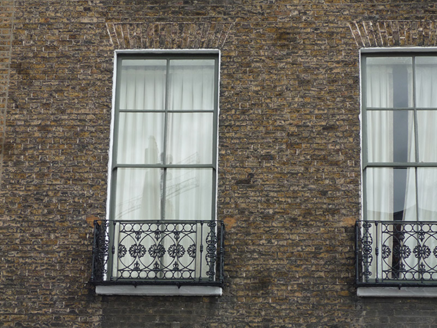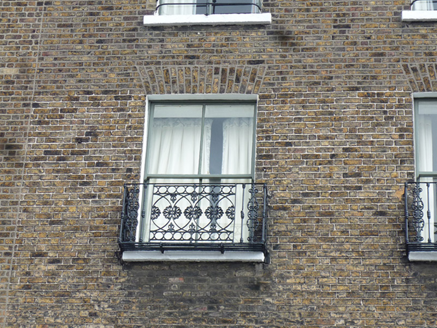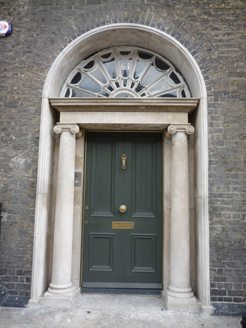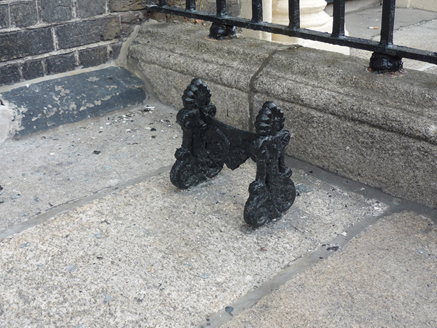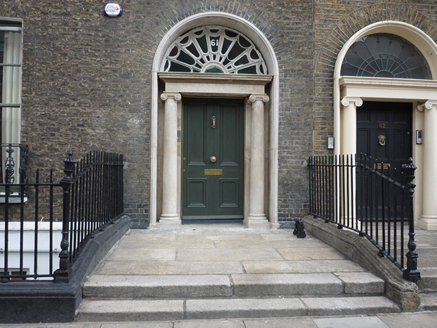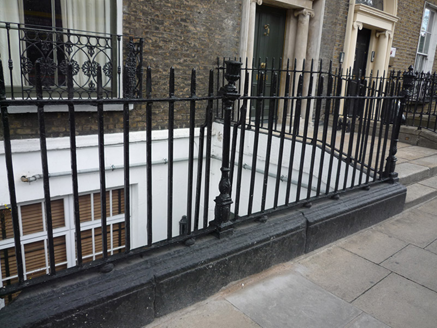Survey Data
Reg No
50100639
Rating
Regional
Categories of Special Interest
Architectural, Artistic
Original Use
House
In Use As
Office
Date
1835 - 1855
Coordinates
316830, 233122
Date Recorded
11/07/2016
Date Updated
--/--/--
Description
Attached two-bay four-storey former house over basement, built c. 1845, having flat-roofed two-storey return to east end of rear. Now in use as offices. M-profile roof, hipped to east end, having brick parapet with granite copings, shared brown brick chimneystacks with clay pots and rendered base to north party wall, and concealed rainwater goods. Flemish bond brown brick walling on painted granite plinth over painted rendered basement. Square-headed window openings, diminishing in height to upper floors, with painted rendered reveals, painted granite sills and brick voussoirs. Timber sliding sash windows with four-over-four pane windows to ground and first floors with cavetto horns, two-over-two pane to second and third floors with convex horns, and replacement timber casement window to basement. Decorative cast-iron balconettes to ground, first and second floors, and wrought-iron window-guards to top floor. Apparently timber sash windows to rear, three-over-three pane and two-over-two pane to top floor and six-over-six pane below, tripartite to ground and first floors. Recessed round-headed doorcase with moulded surround, limestone freestanding Ionic columns, entablature with fluted frieze, decorative cobweb fanlight and recent four-panel painted timber door with brass furniture. Granite entrance platform with decorative cast-iron boot-scrape and two granite steps. Wrought-iron railings on painted moulded granite plinth enclosing basement area, with decorative cast-iron posts. Wrought-iron gate leads to quarter-turn masonry stairs with winders and simple iron handrail accessing basement. Recent timber glazed door to basement level. Yard and carparking to rear.
Appraisal
No. 61 Baggot Street Lower is a well-preserved mid-nineteenth-century former house, forming part of a cohesive row on a street that has been well retained. It displays the well-balanced proportions and graded fenestration pattern typical of the period and is enriched with decorative iron balconettes to three storeys, and a Greek Revival doorcase executed in Portland limestone, with a decorative boot-scrape. The intact setting contributes to the character of the streetscape. Development of Baggot Street began at the west end in the late eighteenth century, but was slow due to recession during the mid-1790s. The majority of houses were built during the early decades of the nineteenth century, but a number of plots were still being advertised during the early 1840s, by which time the street had developed into a thriving residential thoroughfare. Nos. 60-63 Baggot Street Lower had not been erected by 1843. There are many signs of speculative building including variation in levels, materials and detailing. However, by the mid-nineteenth century Baggot Street had developed into a thriving residential thoroughfare.
